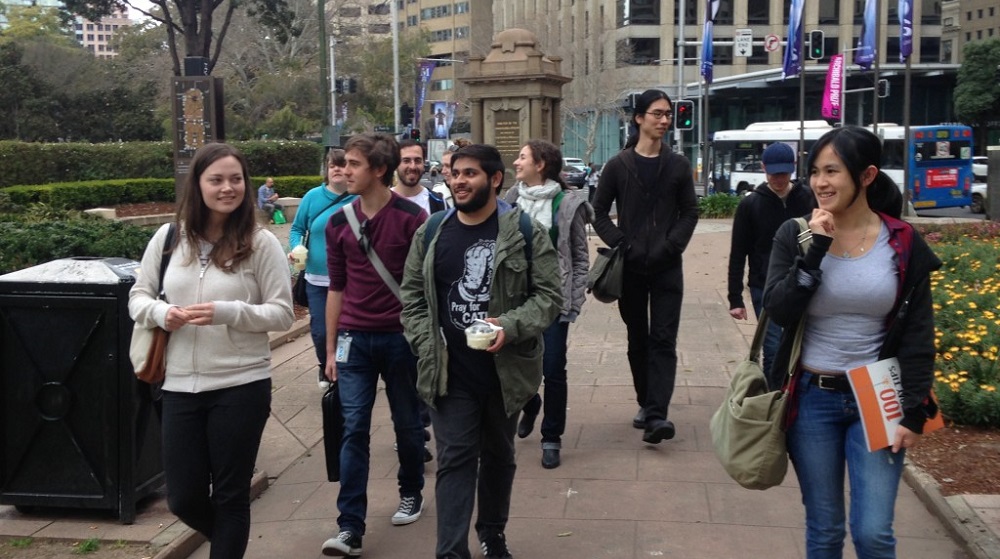
Experimenting with Scale and Time at Sketchmeet Sydney
Sydney’s sketchmeet crew know how to get their draw on. Yesterday we meet up at Town Hall in the morning and got busy. We did the rounds of hyde park, NSW Art Gallery, saw the Archibald, had drinks at a cafe and compared notes at Victoria Galleries.
Whilst roving we came up with an interesting drawing technique. A sort of game that improves composition, balancing tone and contract, foreshortening, flow, allows for more failure, encourages experimentation, creates more learning, opens the mind, calms the soul and produces better work.
“This is the sort of idea that can make anyone a confident artist in less than an hour.”
For now I’m calling it “Experimenting with Scale and Time” because I can’t seem to find it previously detailed in this way.
Here’s how it works. Break your session down into 6 sections.
Section A: 6 micro drawings. 1 second each.
This is literally that. You basically take you marking device and touch the page and see if you can make something work on 1 second in less than a millimetre.
6 seconds goes fast.
Section B: 5 1cm drawings. 15 seconds each.
Do the same thing but in a little more room. Fill a centimetre. No more. No less.
Within 1 minute it’s surprising how much you can capture. It’s an opportunity to try different things. Start from different places. Go for different things. Experiment!
Some things will come easy. Some things will fall flat. Notice how that makes you feel.
If you’re at a life drawing session then, each box will have a different pose.
At this stage you should be able to gain a insight into how much light and dark space you’ve got going on. You should be unwittingly forming a very high level opinion on composition.
Section C: 4 stamp size drawings. 1 minute each.
A stamp size is approx 3cm square. It’s not an exact science.
This can now start to take shape.
In a given minute you can take a lot of the ideas explored in Section 1 and 2 and start to jump to some interesting conclusions about how much dark and light you want in the overall composition.
At this point you will be about 10 minutes into your session.
Section D: 3 A5 drawings. 5 minutes each.
Slow it down and start to consider, what value is this large size going to offer you. There is no point in going large if small can do the job.
Section E: 2 A4 drawings. 10 minutes each.
Keep an eye on how this reasonable size actually can be perceived as a small size. A few large brush strokes and you’re done! it could be done int he same time as your 1cm drawing. Your 10sec drawing.
Section F: 1 A3 drawing. 15 minutes.
Again. Keep in mind how you would have done the 1cm drawing. If that has been lost then start again.
When do you stop?
You stop when you’ve got all the information you need on the page.
What information do you need?
Answers to every question that you feel needs asking.
Tools
I’ve found that going up in size also means going up in pen/pencil/brush size. The bigger the drawing the bigger the brush. Filling the space with the same size device just doesn’t work for me.
Please try it and let me know what you think @ArtKahne. Does it change the way you think about imagery?
The detail in this is not the point. You can drag it out or speed it up. It’s just a guide to get the idea moving. The fast, the better. The faster you move the more chances you’ll get to fail and learn. More opportunities to experiment.
The more bad lines the better. A drawing with no bad lines teaches you nothing.
If it’s not in your imagination and on the page within the first few seconds it’s probably not going to happen. That initial kick needs nurturing.
I’m looking forward to exploring this further at next months Sketchmmeet. See you there!

